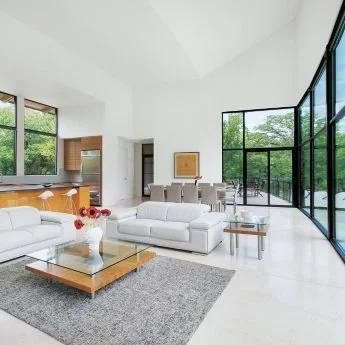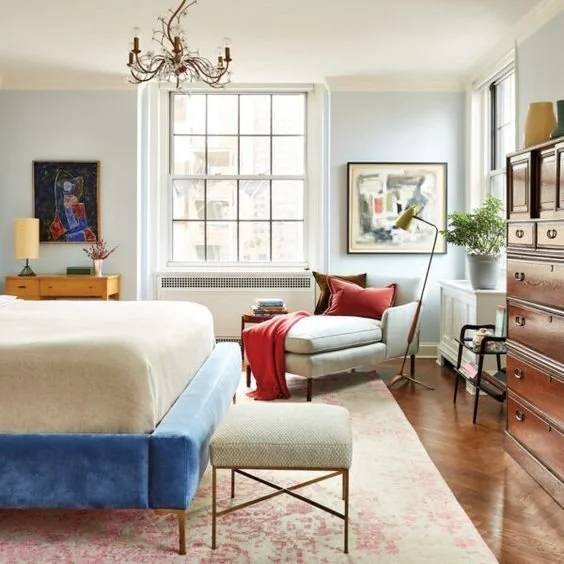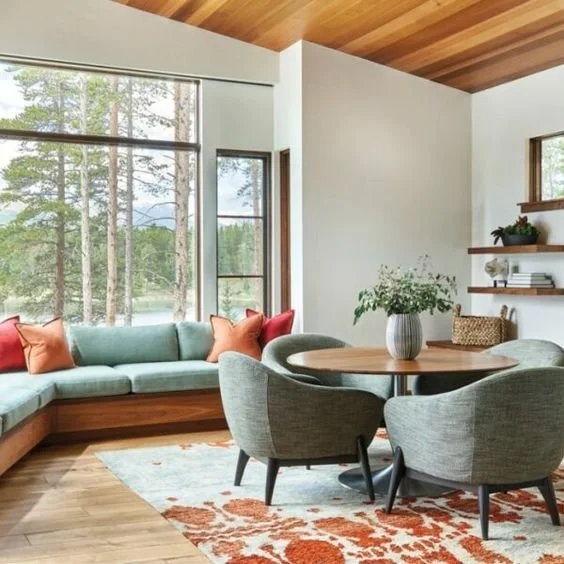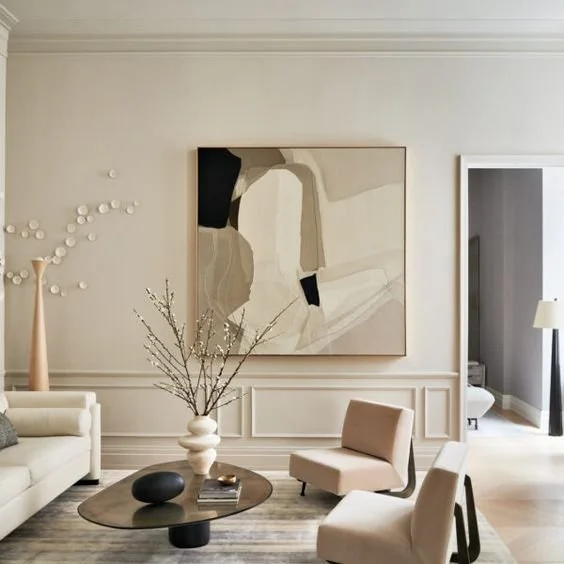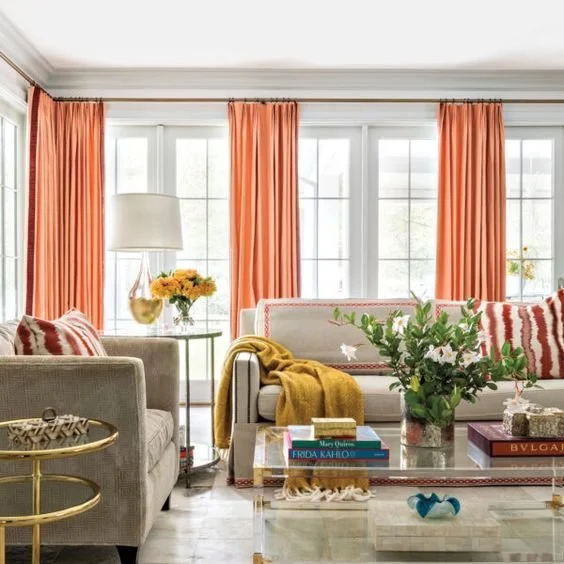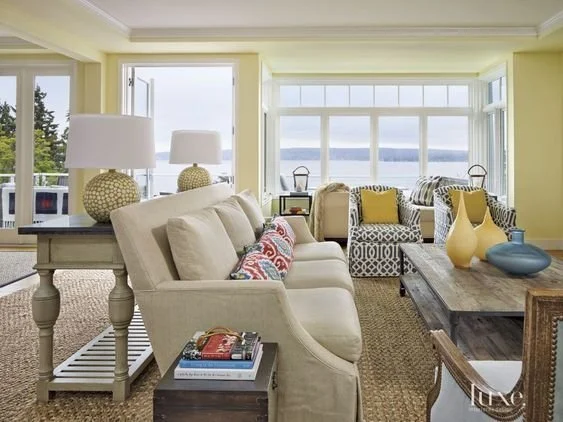Setting the mood of a room using the right color
Color psychology is a fascinating subject that many interior designers dive deep into - why? Because color stimulates emotion and sets the tone for how people feel when they step into a room. Your chosen color palette has the power to create the home of your dreams or a home you’d rather avoid. Color is an integral part of your daily life, affecting not just your mood but your energy levels too. The colors of the rooms within your home serve as a direct reflection of your personality. People who live in a home make it their own by choosing colors that reflect their preferences and desired feelings. Color not only affects how you feel but has the power to change the appearance of your furnishings as well as the shape and size of the room itself.
Pretty cool, right?
While most people probably do not spend a lot of time thinking about room color; it affects the way we live our lives, every day. Room color can impact our thoughts, emotions, and depending on age; gender, ethnic background, and even climate. Certain colors or even groups of colors often receive a common response, which is why it’s so important to choose colors wisely when it comes to decorating your home.
Tell us what you’d like to achieve, and we’ll tell you which color to choose; or follow us on Instagram and keep your eyes open for “Friday Freebies” which will include paint guides for some of our favorite hues.
Colors to make a room look bigger
There are lots of ways to increase the visual size and feel of a room. If you can’t increase the actual square footage of the room, the color you pick will help you create your desired effect. By making smart choices with your home’s color schemes, you can give the illusion of more space and help make better use of the space that you have.
If you’re wanting to increase the space of a room, but don’t have the resources for a full renovation then this is for you! The best paint colors for smaller rooms are those that work with both the natural contours of the space itself and the available natural light to provide a visual transformation that suggests there is more space than there actually is. For a more streamlined look, go with the same color on all surfaces and only change the sheen; eggshell for the walls, semi-gloss for the doors and trim and a flat finish on the ceiling. This consistent use of color will make your room appear larger. If you have short ceilings (8’-0” to 9’-0”) consider a slightly lighter color for the ceiling, but steer away from a bright white that makes the ceiling stand out.
Crisp white
White isn’t foolproof for this purpose, the shade and tone are very important. White can look drab (and have the opposite effect) in a naturally dark room. Stick to a crisp hue, and focus on your upholstery and accessories.
When selecting furnishings for a crisp white room, look for stark contrasts in the public areas of the home to create interest and encourage activity. In more private spaces look for softer transitions with either pastels or adding in neutrals. Neutrals are great if you use the right materials like leather, wood tones and natural stones to create depth in your color palette. Use a sheet of printer paper to compare your “white” to a crisp white backdrop to give you a clear read on the undertones. This will help make sure you don’t get the paint up on the wall and realize it’s actually a very light pink!
Our top choices for white paints are:
Sherwin Williams, SW005 Pure White
Sherwin Williams SW7008 Alabaster
Photography : Stephen Gutierrez
Pale blue
Pale blue is a very gentle shade that creates a soothing and calming touch to any room. It also works well to make a room feel bigger, particularly when combined with other light colors on the ceiling, trim, and doors.
Pale blue is a wonderful selection for more restful rooms like a den or bedroom. I love pairing pale blue with browns and tans for added visual interest without adding in too vibrant a color and killing the peaceful vibe. If it’s a more active living space, you can add more color saturated accessories in contrasting colors like deep orange or brick red.
My go to favorite blue is Sherwin Williams SW 6238 Icicle!
Photography : Marius Chira
Interior Design : Alexander Doherty Design
Light green
The perfect light green can quickly open up a space and offers a similar effect as pale blue. For an updated look, opt for a muted sage or moss tone.
When selecting a “color” for your space use grey undertones to create a more calm hue versus something more crisp and vibrant. Reserve the vibrancy for accessories like pillows, accent furniture, or even accent painting the back of a bookcase.
Here are some of my favorite greens:
Benjamin Moore October Mist
Sherwin Williams SW 6434 Spinach White
Sherwin Williams Nonchalant White SW 6161
Photography : David Patterson
Tim Hagman, Hagman Architects
Rachel Hoback and Michaela Rodgers, Associates III Interior Design
Colors to make a room feel warm
When cooler weather strikes or your home lacks natural light, color choices can go a long way when it comes to making a home look and feels warm, cozy, and inviting. From rich hues of homey earth tones, there are plenty of color choices that will instantly warm up your space.
creamy white
The right shade of white can make or break a room. The perfect off-white color can act as a backdrop for your living room decor while creating a cozy living environment. Grab your white printer paper again to clearly read the hues and undertones. Another expert designer tip - Do Not let your painter swap and do a color match from a different manufacturer. The slight color differences in various white tones almost guarantees you won’t get an exact match.
My number one warm white: Benjamin Moore Chantilly Lace OC-65
Photography:Tim Lenz
Interior Design:Jordan Carlyle, Carlyle Designs
tangerine
If you love a warm and vibrant look, dress up your living room walls with shades of orange. Orange steams energy, aliveness, and warmth. Tangerine, blood orange, and pumpkin are all hues of orange to try if you're looking to spice up the color in your living room.
Since these orange hues are very saturated, use them sparingly and pair them with lighter neutrals and natural materials like stone and leather. Chocolate brown, tans and neutrals will keep the warmth while adding character to your color palette.
Photography: Julie Soefer
Interior Design: Caroline Finkelstein and Elisabeth McCabe, Ecco Design
Colors to boost productivity
Working from home and looking for a way to boost your productivity without increasing your daily coffee intake? Try one of these colors!
Blue
The general consensus of a University of Texas study found a blue-green room improved productivity better than red rooms and white rooms. In spaces where people need to focus and get work done, blue is the hue to use. Not to mention blue is the most popular color among men and women.
Sherwin Williams SW 9151 Daphne is a beautiful, true indigo blue that pairs well with many colors and becomes a neutral when applied to all four walls and trim.
Photographer: Michael Graydon
Designer: Meredith Heron
yellow
Yellow is one of the most inviting and uplifting colors in the rainbow. No matter what shade it is, yellow is vibrant and fun. If you want to create a more open, invigorating atmosphere try adding accents of yellow, but be mindful too much yellow will overwhelm the senses. It can also flair anxiety if used in a too vibrant of a hue, so steer towards softer, muted tones.
My number one yellow is Benjamin Moore Mellowed Ivory 2149-50.
Photography : Benjamin Woolsey
Interior Designer : Graciela Rutkowski, Graciela Rutkowski Interiors
Colors to make a room feel more intimate
Similar to making a small space seem larger, decorating a large room can also be a challenge. Light and bright walls are more reflective, making a space feel open and airy, which helps maximize natural light's effect and increase the perceived size of a room. Dark shades tend to absorb light, making rooms feel smaller and creating a sense of intimacy. Consider a darker accent wall, painting the whole room, or focusing on accessories.
Keep in mind that the color of the ceiling is just as important as the color of the walls when you are trying to create an intimate setting.
When selecting a more saturated color for your walls, go for a lighter version of the same hue for the ceiling. This prevents a stark contrast that will make your eyes vibrate and will be a less restful experience. I also like painting the trim the same color as the walls, just using a different, higher durability finish or sheen. This gives a subtle contrast without even selecting another color and helps the room read as one volume.
When it comes to painting a room there are a few questions to ask yourself:
Who will be spending the most time in the room? Who is the room for?
What purpose does the room have?
What mood do you want to create in your room?
What colors match that mood?
Gather inspiration from magazines and design websites. Be aware of your textiles and furnishings. Let your rug, throw blankets, and pillows guide your color scheme. It’s not just about the color on the walls, everything when put together will create the final effect. Paint is an easy, inexpensive way to have a big impact on your decor so this is a great place to take a risk!
Once you find something you like, select a few colors you like, but be mindful because too many colors can make a room feel chaotic or cluttered. I suggest clients stay within a particular color family for easy-on-the-eye transitions and keep it at or under three different colors.

